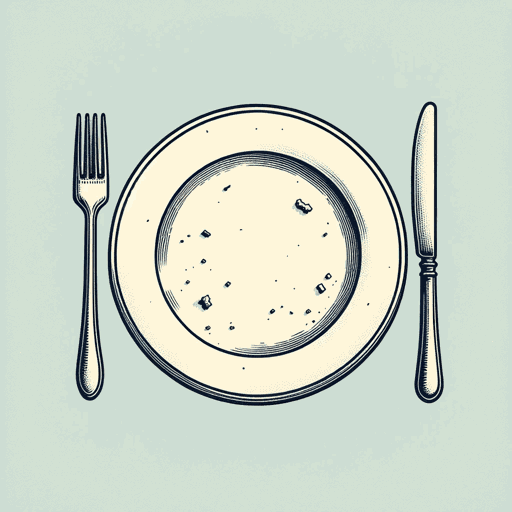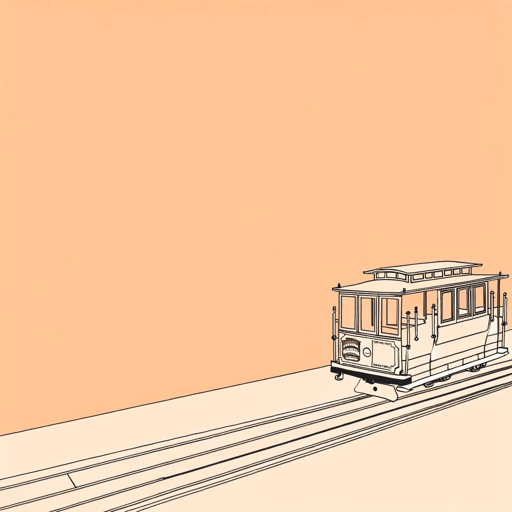28 pages • 56 minutes read
Jack LondonSouth of the Slot
Fiction | Short Story | Adult | Published in 1909A modern alternative to SparkNotes and CliffsNotes, SuperSummary offers high-quality Study Guides with detailed chapter summaries and analysis of major themes, characters, and more.
Summary and Study Guide
Summary: “South of the Slot”
“South of the Slot” by Jack London is a short story that debuted in The Saturday Evening Post in May 1909. As with many of London’s works, the story employs a naturalistic style to delve into the complexities of class struggle, personal transformation, new or developing geographic frontiers (in this case, the urbanization of San Francisco in the early 20th century), and the clash of cultural ideals. The narrator occupies a third-person omniscient point of view and focuses on protagonist Freddie Drummond, a sociology professor at the University of California. Freddie writes academic books on labor practices, but during a transformative journey throughout the story, those preconceptions are challenged, and he is forced to confront the harsh realities of working-class life. The story demonstrates several naturalistic elements, especially through its exploration of the deterministic influence of environment on the characters’ lives. Freddie’s depiction becomes a microcosm of broader societal forces shaping individual destinies, reinforcing the idea of individuals as products of their surroundings.
This guide refers to the reprinting found in Jack London: Novels and Stories (1982).
After delivering his final lecture of the term, Freddie Drummond, a sociology professor, embarks on a practical research project. He decides to venture into the working-class environment known as south of the Slot to experience the life of a manual laborer and then write about it. “The Slot” is the term given to the cable car system that divides San Franciso at Market Street. North of the Slot is a middle- and upper-middle-class neighborhood of white-collar workers, and south of the Slot is a working-class area of factories and manual laborers. The Slot has come to symbolize the city’s class divide.
South of the Slot, Freddie encounters the gritty realities of manual labor, adopting the working-class persona of “Bill Totts.” Bill becomes Freddie’s alter ego and essentially functions as a foil to Freddie. Working in a cannery earning a few dollars per day, Bill learns “many things,” including how to blend in and communicate with his coworkers. Initially, Bill prides himself on completing piecework as quickly as possible to earn more money. He ignores his colleagues’ complaints that he is setting a faster work pace, thinking of them as inherently lazy. He responds by sharing his abstract thoughts on American ideals and freedom of contract. However, he learns his lesson when the other cannery workers severely beat him up.
As Freddie immerses himself in Bill’s working-class lifestyle, he undergoes a profound transformation. The dichotomy between his initial academic ideals and the challenges of the working-class environment creates internal conflicts. The narrative explores the clash between theoretical beliefs and the practical experiences of individuals living in a socioeconomically divided society. Freddie is a well-regarded scholar of sociology and has written several books on topics related to class and labor. However, his understanding is limited to the abstract world of books and lacks experiential understanding. Bill, on the other hand, lives the life of a union laborer within the marginalized confines of the neighborhoods south of Market Street.
Bill is a large man and soon realizes that he is well-suited for the life south of the Slot. He amazes himself at his ability of acting one way north of the Slot and a completely different way when he is south of the Slot. As time goes by, he develops personal relationships with members of the community, becoming an important volunteer within the union, and developing a romantic relationship with a woman named Mary Condon. Mary is a union president, and their first interaction illustrates her dedication to labor practices and the people south of the Slot. When Bill first meets her, he is carrying a heavy trunk at a union member’s apartment. When Mary asks if he is a union member, Bill responds that it is none of her business and continues to carry the trunk. Mary strikes Bill, making him fall against the wall, and he finally shows his union membership card. This scene solidifies Bill’s respect for Mary and creates a bond between the two of them. Freddie disapproves of independent women like Mary and is opposed to women’s suffrage. However, Bill falls in love with Mary immediately.
While Bill’s relationship with Mary is evolving, Freddie decides he will marry a woman named Catherine Van Vorst. Catherine is from a wealthy family, and her father has professional connections that could benefit Freddie’s career. She is cold and reserved, just like Freddie, and seems an ideal match for him. Freddie and Catherine fall in love because of potential economic and social status gains for each other, while Bill and Mary are in love because of a personal attraction and a bond over their shared dedication to bettering communal causes. Freddie resolves to give up his secret life as Bill, knowing that he cannot maintain his two personas.
One day, Freddie and Catherine are in a chauffeured car. Their progress is halted by a mob of union laborers protesting the hiring of scabs (replacement workers). The replacements are accompanied by police officers, who serve as their protection. The confrontation quickly turns violent, and the police and scabs fight with the union members in the streets. Chaos ensues, and the car that Freddie and Catherine are traveling in is trapped. As the violence escalates, and Freddie sees his union member friends in the battle, he “transforms” into Bill. Leaping from the car, he begins fighting and throwing coal at police officers. Eventually, the police are forced to withdraw. Bill and Mary leave together, walking arm-in-arm down the street as Catherine watches in amazement from the car.
In the resolution of the narrative, Freddie Drummond ceases to exist. Bill marries Mary and becomes a renowned union leader. The story concludes with Freddie attaining a sense of completed transformation into Bill, which implies that Freddie’s experiences south of the Slot left an indelible mark on his identity.
Related Titles
By Jack London

A Piece of Steak
Jack London

Martin Eden
Jack London

The Call of the Wild
Jack London

The Iron Heel
Jack London

The Law of Life
Jack London

The Sea-Wolf
Jack London

To Build a Fire
Jack London

White Fang
Jack London

